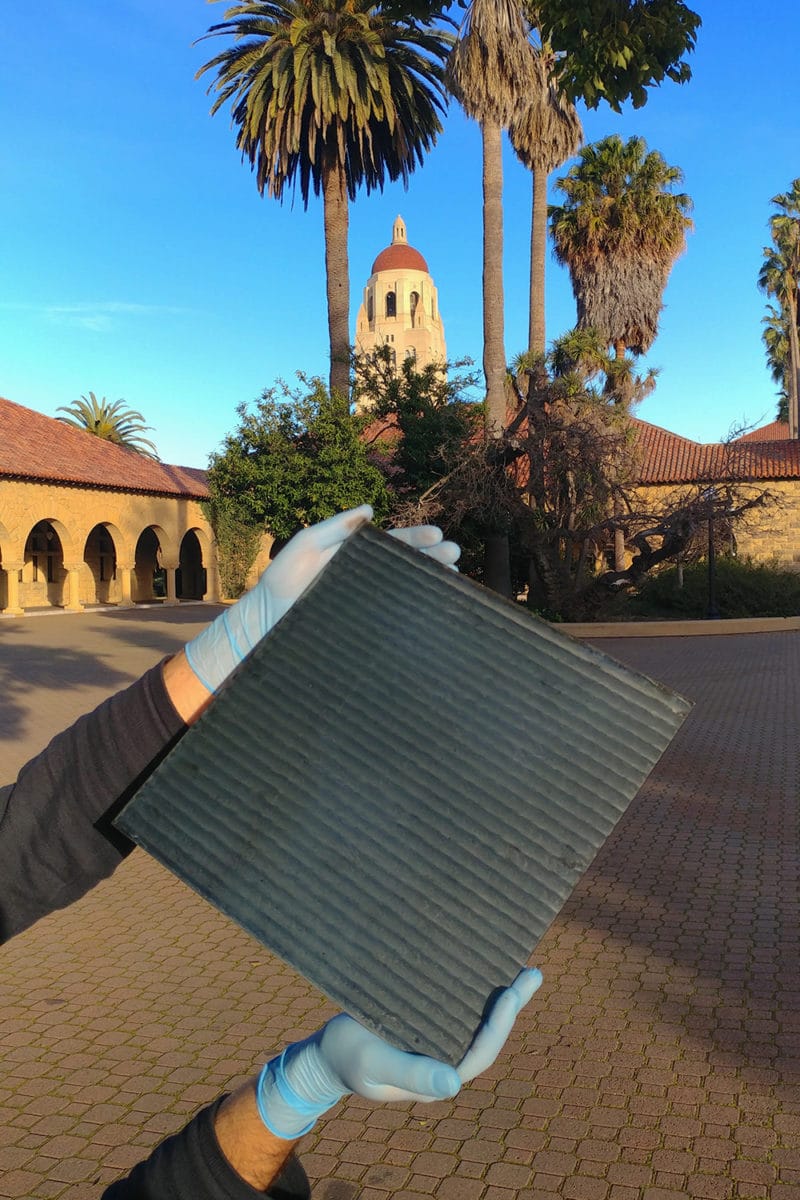Stanford researchers claim to have demonstrated an ultrafast process to manufacture stable perovskite cells and modules with efficiencies of 18% and 15.5%, respectively.
Described in the study Rapid Open-Air Fabrication of Perovskite Solar Modules, published in Joule, the proposed technique is based on plasma processing, which is one of the most important tools in thin film and surface treatment technologies, with the addition of rapid spray. “This technology uses a robotic device with two nozzles to quickly produce thin films of perovskite,” the Stanford team explained. “One nozzle spray-coats a liquid solution of perovskite chemical precursors onto a pane of glass while the other releases a burst of highly reactive ionized gas known as plasma.”
The academics claim that conventional processes require around half an hour to “bake” the perovskite solution and that their new technique can convert liquid perovskite into a thin-film solar cell in a single step and four times faster. The process is said to be able to deliver 40 feet (12m) of perovskite film per minute. “We achieved the highest throughput of any solar technology,” said research co-author Nick Rolston. “You can imagine large panels of glass placed on rollers and continuously producing layers of perovskite at speeds never accomplished before.”
The scientists stated that this process may enable the manufacturing of perovskite modules at a cost of around $0.25 per square foot. This would compare to around $2.50 per square foot needed to produce a crystalline silicon panel.
The solar cells built in the demonstration have maintained all their efficiency for five months and the researchers are now seeking to improve their durability through new encapsulation technologies. “If we can build a perovskite module that lasts 30 years, we could bring down the cost of electricity below 2 cents per kilowatt-hour,” Rolston added. “At that price, we could use perovskites for utility scale energy production. For example, a 100 MW solar farm.”
This content is protected by copyright and may not be reused. If you want to cooperate with us and would like to reuse some of our content, please contact: editors@pv-magazine.com.




$0.25 per square foot,
$2.50 per square metre.
At 15% efficiency, 150W/square metre.
About $16 per KW capacity.
Current PV panels retail for about $1000/KW, so the wholesale price might be $500/KW.
So this could be pretty amazing. The cost might as well be zero, because it will probably be dwarfed by the cost of the structure and wiring, etc.
Imagine a 100m long printer, on the edge of the desert, or even better in orbit, printing at 12m per minute ….
Sh*t up and take my money, when they plan to actually bring it to the market?
I think calculation is missing some part of the module. The cost of TCO coated glass is already around 10 USD/sqm even without any perovskite deposition